Bulldozers are strong machines that mainly assist with pushing, digging, excavating, and leveling materials like soil and debris at a work site. They come with large, heavy blades in the front that push material. Some come with other modifications like rippers in the rear to help break down tough ground.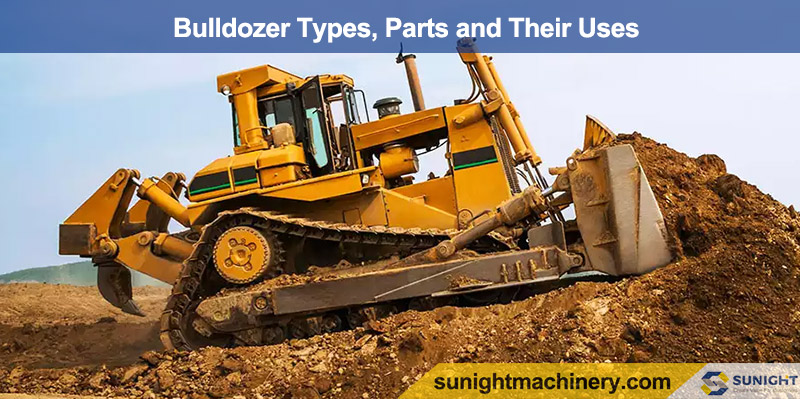
There are many different bulldozer types to choose from depending on your specific project. The type of terrain you’re working on, your project type, and other criteria are key factors to consider when selecting a bulldozer. The right machine is also crucial for both the efficiency and safety of your project. We’ll break down the main bulldozer types and highlight each dozer’s key features.
A crawler is sometimes referred to as a track bulldozer and looks most similar to a tractor. This heavyweight is great for moving heavy materials from one area to another. This bulldozer is ideal for traversing dense and irregular terrain since the tracks give it great traction. Larger crawlers have rippers that assist with crushing and clearing dense terrain.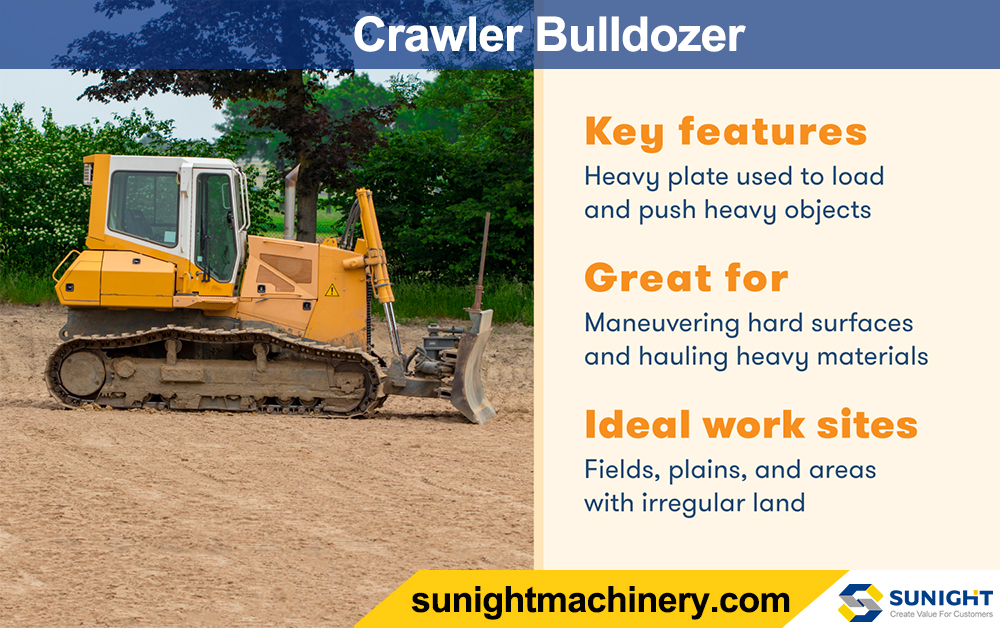
This machine is sometimes referred to as a tire bulldozer and is normally larger than a crawler. A wheel dozer is more maneuverable than a crawler since its tires offer better overall handling. It also has completely articulated hydraulic steering and moves on a smaller axis. This machine is also ideal to use for soft or sensitive ground since the tires are gentler than tracks.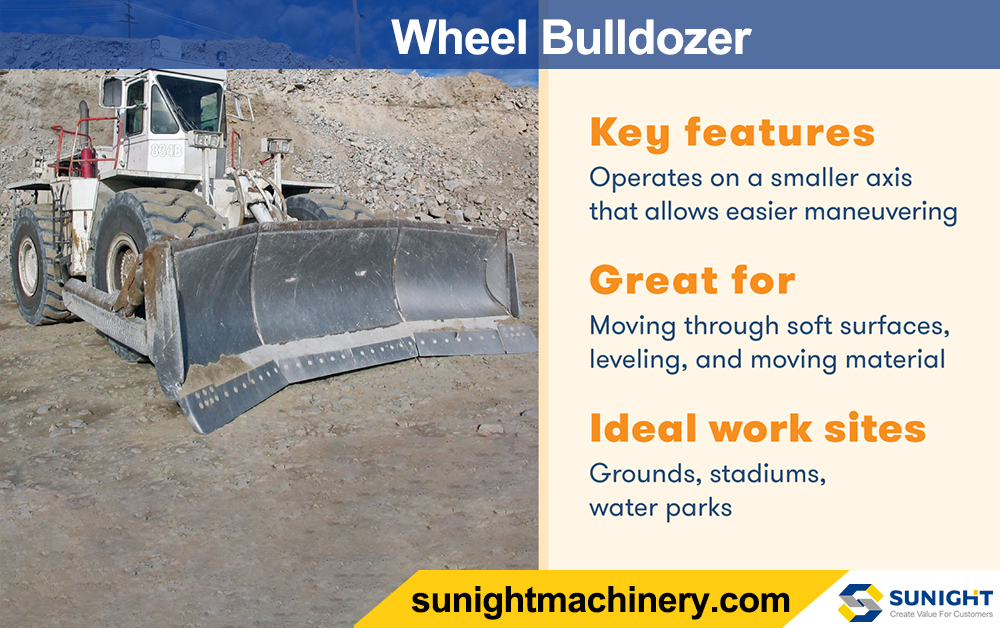
This smaller bulldozer is also known as a compact bulldozer. A mini dozer is great for projects that require more maneuverability and versatility than larger machinery. Thanks to its small size, a compact bulldozer can perform well in different types of projects that require tasks like grading and clearing lots.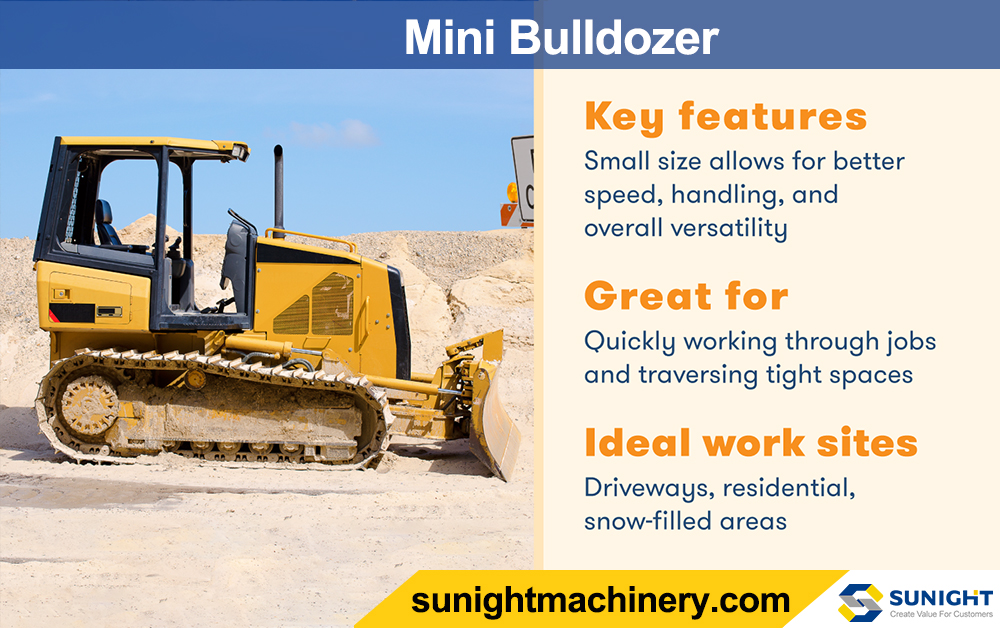
The above bulldozer types can be further classified based on the blades used. Different blades serve different purposes, can handle different types of materials and can handle a range of load weights. We listed the most common types below.
An S-blade is the shortest type of blade a dozer can use and does not have side wings. This blade attaches to the arm in the lower back corners of the blade. Thanks to its shape, the straight blade is best for fine-grained and medium- to hard-density materials. The drawback is that its straight shape limits the dozer’s lifting and carrying capabilities. Some of the best tasks for s-blades include stumping, back-filling, grading and evening soil.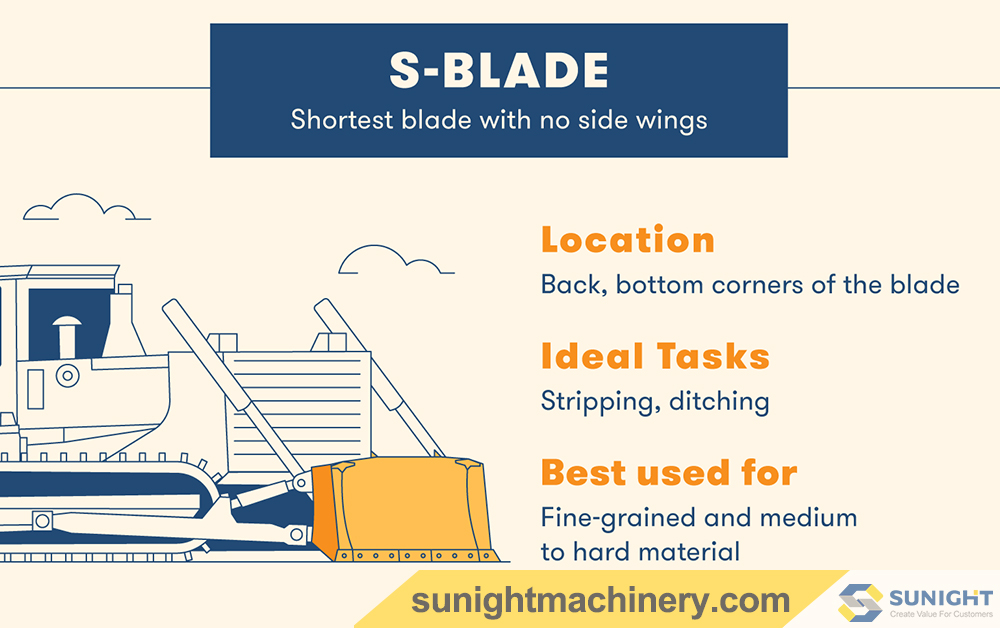
A U-blade has large side wings and a curved shape that makes it ideal for pushing materials across long stretches of land. The wings keep material from spilling over when in motion. Like S-Blades, they also attach to the lower back corners of the blade. It’s the largest blade type in both height and width and is best used with soft- to medium-density soil. Some of the best tasks for u-blades include ditching, hauling, pushing and crowning.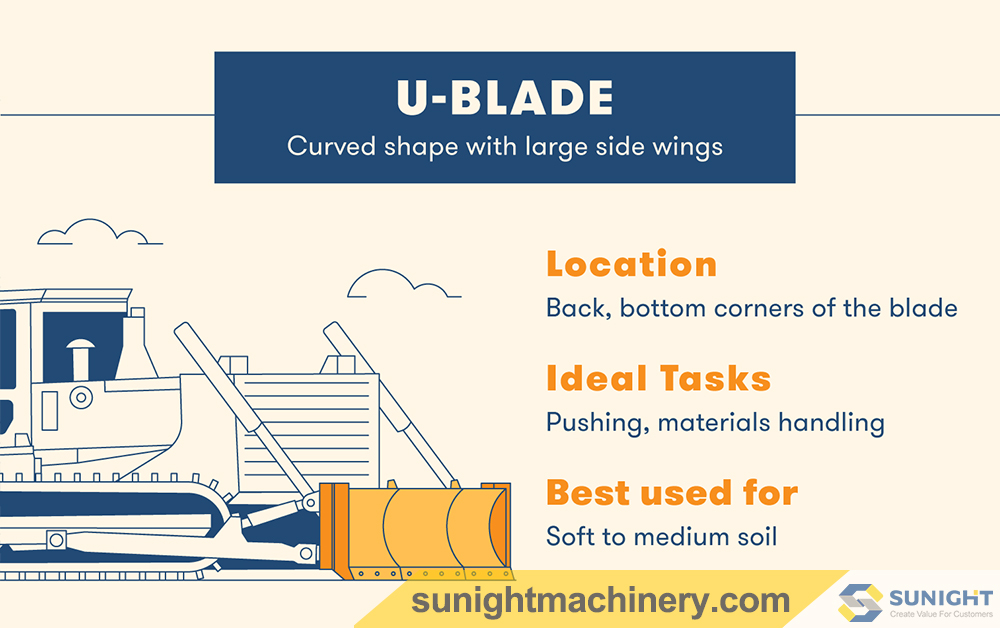
This blade combines features from the S-blade and the U-blade to give it stronger penetration and better overall versatility. It’s narrower, less curved, and its side wings are smaller compared to a normal U-blade. This design makes it ideal for pushing soil across long distances. This blade attaches in the lower back of the blade using angled stabilizing braces and either one or two hydraulic tilt cylinders. It’s best used to push soft- to medium-density sand and soil. Some of the best tasks for an s-u blade include crowning, moving heavy material, stumping and ditching.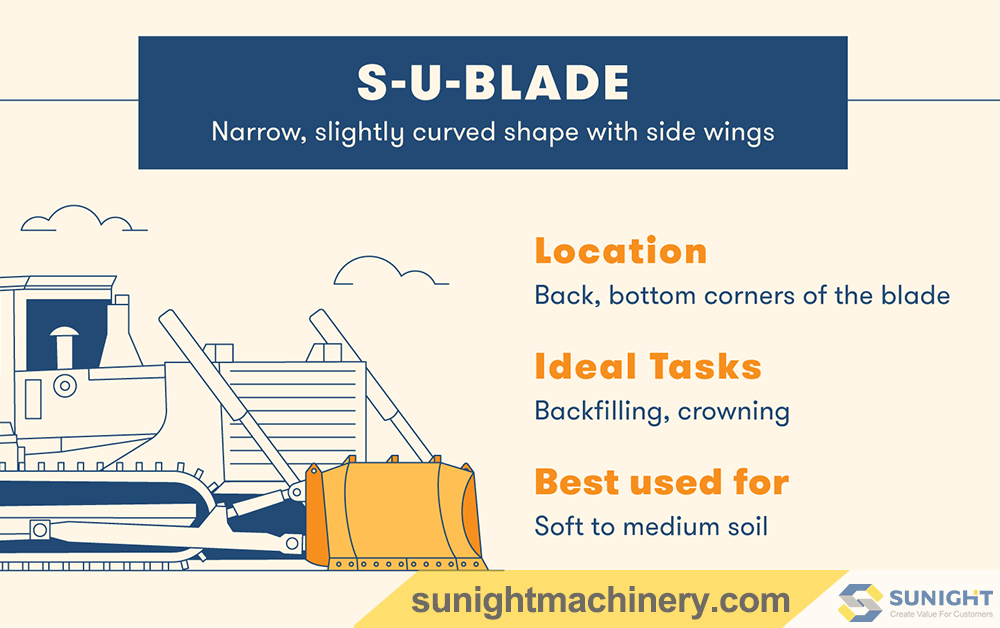
This type of blade attaches to the center of the bulldozer’s panel. Its location is useful for moving debris to the side since it can angle close to 30 degrees left or right. Due to this, an angle blade is considered a two-way blade. Keep in mind that this blade can spill since it does not have side wings. It’s a great choice for projects involving soft- to medium-hard-density soils, snow, and gravel. Some of the best tasks for angle blades include stumping, shaping, stripping and ditching.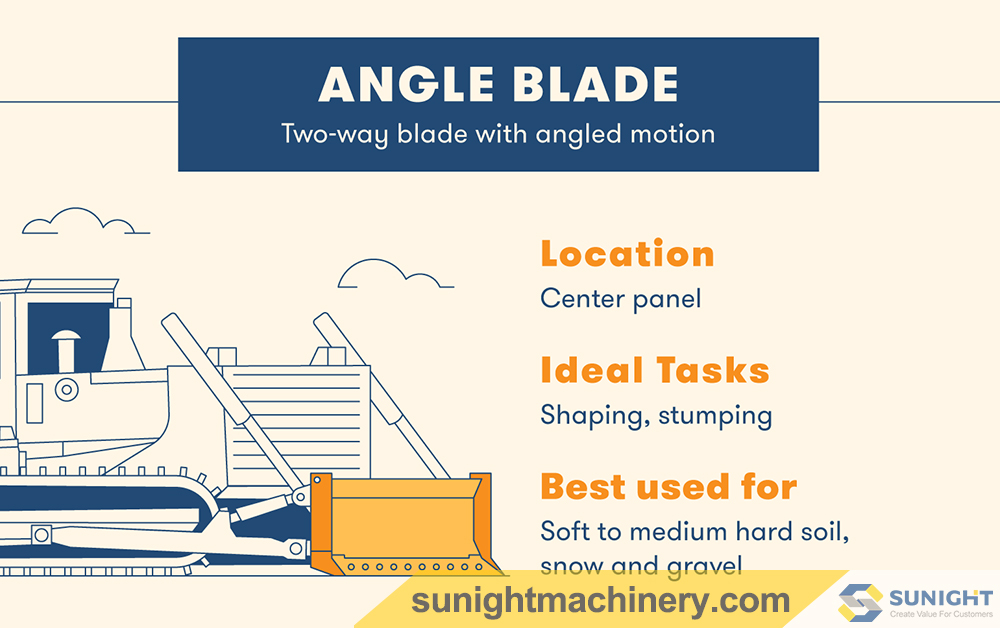
The PAT blade is one of the most versatile blades thanks to its easy maneuvering and multifaceted motions. The driver controls the blade from the cabin and can angle, tilt, and lift in almost all directions. Like angle blades, these blades are mounted in the center of the panel. Some of the best tasks for PAT blades include scraping, land clearing, leveling, backfilling and grading.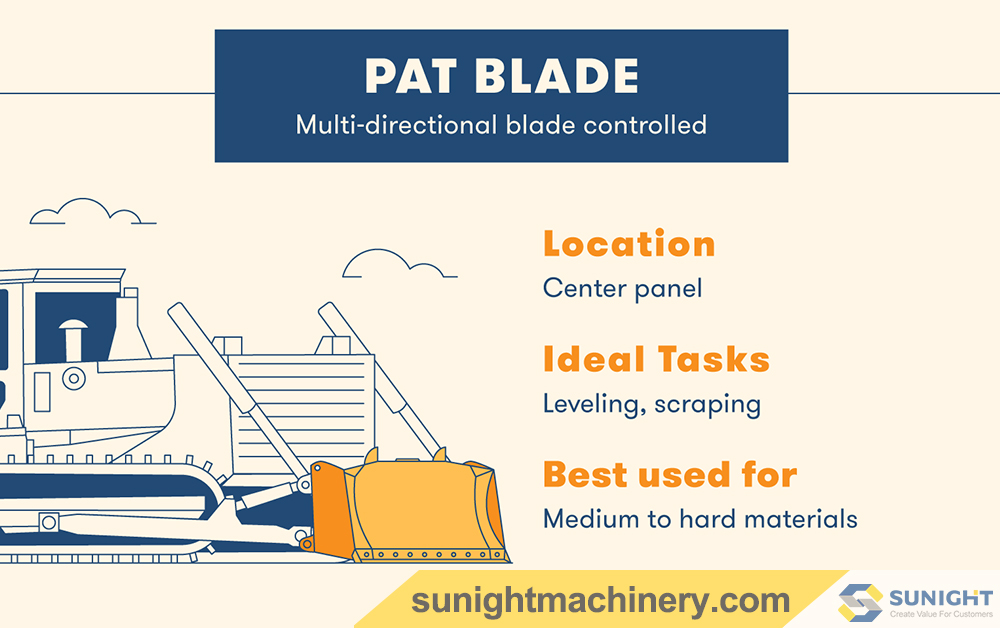
Bulldozers are used in different types of terrain thanks to their design. The main features that differentiate dozers are blades, rippers, and whether tires or tracks are used.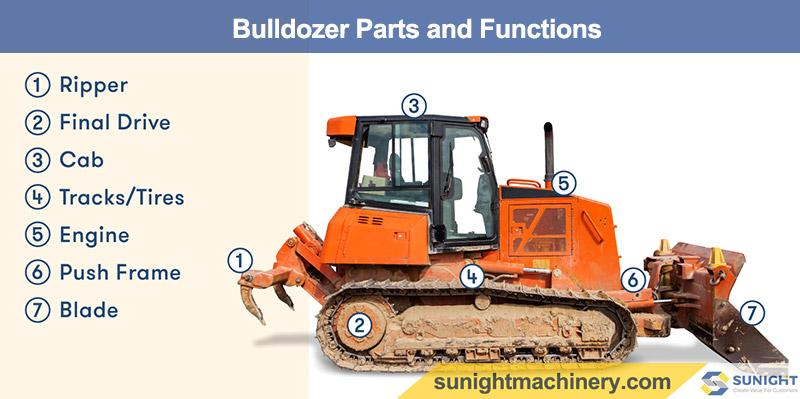
A ripper is the extended attachment located at the rear of the bulldozer that resembles a claw. Rippers are used to break up land to allow agriculture to grow or break down rock and earth to be moved. You can find both single-shank rippers and multi-shank rippers depending on your project needs.
A bulldozer’s final drive are likely the most used and most replaced part on a bulldozer. Modern final drives distribute the load over multiple gear teeth and lifts the drive motor away from suspension.
The bulldozer’s cab is an important part of this machine since it’s where the operator controls this machine. There are different features for some cabs that increases both its level of comfort and safety. You should check to see if your cab reduces sound and absorbs impact while you’re moving around the work site. These are crucial since operators can spend hours at a time inside the cab.
Tracks and tires greatly impact a bulldozer’s mobility. Tracks are great for navigating hard, uneven terrain while tires are better suited for soft ground. You may also want to consider tires if you’re working in a sensitive area that you don’t want to damage.
Bulldozers generally require high-powered engines since they move lots of heavy materials around the work site. There are different types of engines that fulfill different needs. For example, some newer engines produce fewer emissions compared to older engines to comply with certain EPA requirements.
The push frame is essential when positioning materials for different tasks. This bulldozer part is responsible for moving the blade.
The blade is the heavy metal plate located at the front of the bulldozer that is used to push and dig through materials. Like we mentioned earlier, different types of blades are better suited for specific projects.
Purchasing or renting a bulldozer for your project can improve the efficiency of your project if the right one is selected. Here are a few things to keep in mind when reviewing bulldozer types for your next project: